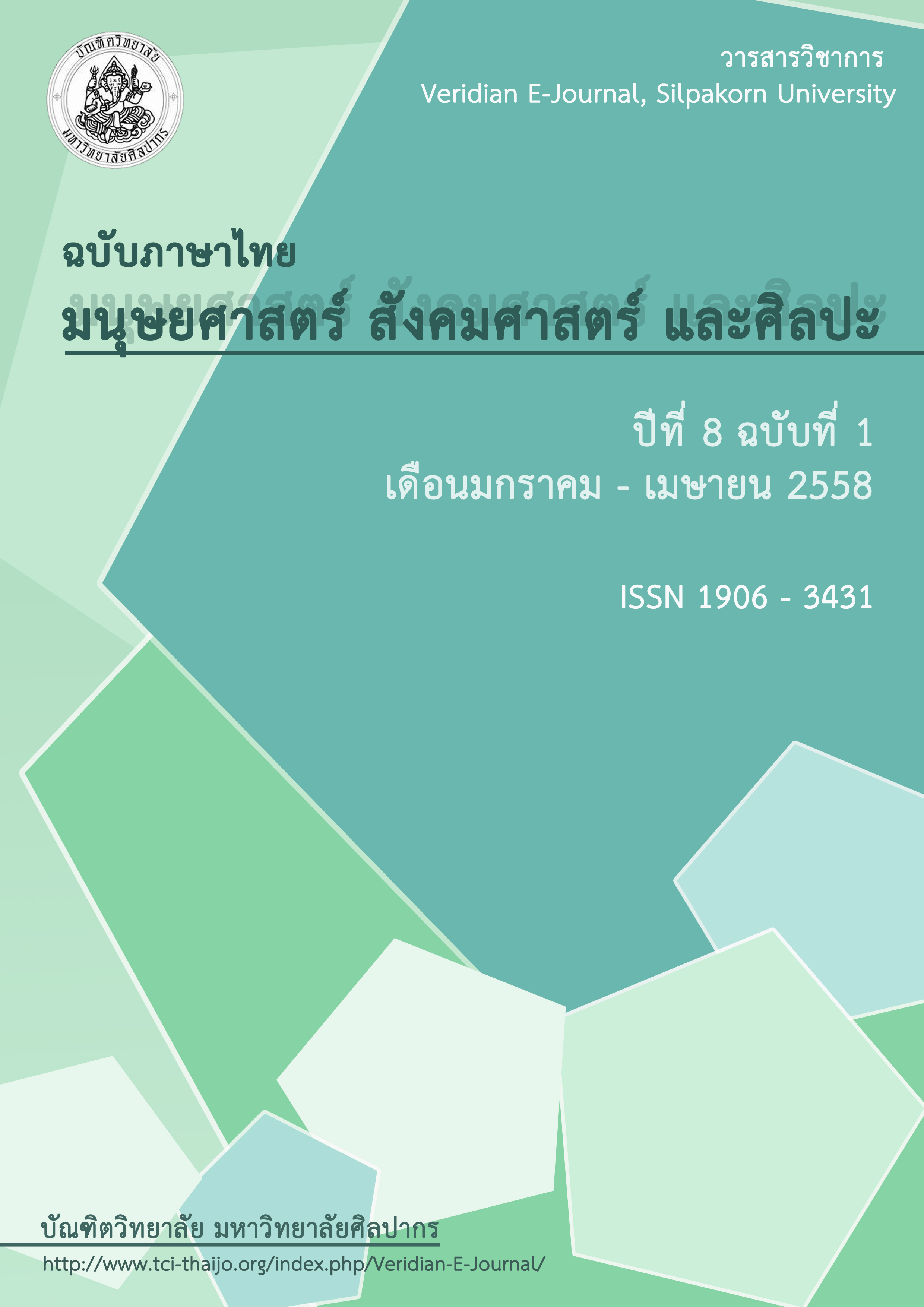เมืองโบราณดอนคา” ข้อมูลใหม่จากการขุดค้นทางโบราณคดี
Main Article Content
Abstract
บทคัดย่อ
การขุดค้นทางโบราณคดีที่เมืองโบราณดอนคา มีวัตถุประสงค์เพื่อศึกษาพัฒนาการทางวัฒนธรรมของเมืองดอนคาและศึกษาความสัมพันธ์ทางวัฒนธรรมระหว่างเมืองโบราณดอนคากับชุมชนโบราณร่วมสมัยในประเทศเพื่อนบ้าน
ผลการขุดค้นทางโบราณคดีจำนวน 3 หลุม พบการอยู่อาศัยของชุมชนแห่งนี้ 2 สมัยคือ สมัยหัวเลี้ยวประวัติศาสตร์ (ราวพุทธศตวรรษที่ 9-11) และสมัยทวารวดี (ราวพุทธศตวรรษที่ 12-16) โดยร่องรอยชุมชนสมัยหัวเลี้ยวประวัติศาสตร์นั้น พบในพื้นที่นอกเมืองทางทิศใต้ (หลุมขุดค้นที่ 3) ดังจะเห็นได้จากภาชนะดินเผาตกแต่งด้วยการขัดมันเป็นริ้วเส้นด้านในของภาชนะ ส่วนพื้นที่ภายในเมืองโบราณพบเพียงชั้นวัฒนธรรมเดียวคือวัฒนธรรมสมัยทวารวดี (ราวพุทธศตวรรษที่ 12-16) ดังปรากฏหลักฐานในหลุมขุดค้น 2 หลุม ทางทิศใต้ของเมือง (หลุมขุดค้นที่ 1 และ 2) เนื่องจากพบโบราณวัตถุในวัฒนธรรมทวารวดี เช่น เบี้ยดินเผา ภาชนะประเภทกุณฑี หม้อมีสัน เป็นต้น
การศึกษาพัฒนาการทางวัฒนธรรมของเมืองโบราณดอนคา นำไปสู่ข้อสรุปได้ว่าเมืองโบราณดอนคาแห่งนี้มีความสัมพันธ์กับเมืองโบราณลุ่มน้ำเจ้าพระยา ลุ่มน้ำลพบุรี-ป่าสัก และ
ลุ่มน้ำมูลตอนล่างตั้งแต่สมัยหัวเลี้ยวประวัติศาสตร์ จนถึงสมัยทวารวดี
แม้ว่าการขุดค้นทางโบราณคดีในครั้งนี้ จะยังไม่พบหลักฐานที่สื่อให้เห็นถึงวัฒนธรรมเขมรที่แพร่เข้ามาในเมืองแห่งนี้อย่างเด่นชัดก็ตาม แต่จากการศึกษาทางโบราณคดีที่ผ่านมา พบว่าอิทธิพลวัฒนธรรมเขมรสมัยเมืองพระนครได้แพร่เข้ามาในที่ราบสูงโคราชและลุ่มน้ำลพบุรี – ป่าสัก ในช่วงราวพุทธศตวรรษที่ 15-18 อีกทั้งได้พบพระพุทธรูปนาคปรก ศิลปะเขมรแบบบาปวนและแบบบายน บนเขาตีคลี ซึ่งเป็นศาสนาสถานที่สร้างในวัฒนธรรมทวารวดี ดังนั้นควรต้องมีการศึกษาเพิ่มเติมในโอกาสต่อไป
Abstract
The objective of the excavation at Donkha ancient town is to study historical and cultural development of Donkha ancient town and its relationship to the other ancient towns in the neighboring countries.
The result of the study revealed the traces of two period settlements, pre-historical period (ca. 4th-6th century AD.) and Dvaravati period (ca. 7th-11th AD.).
Trace of pre-historical settlement was found outside Donkha ancient town to the south (test pit no.3) as seen by the discovery of burnished pottery decorated with vertical lines inside the pots.
However, trace of historical community during the Dvaravati period existed within the town (test pit nos. 1 and 2) where spouted pots or Kendi including carinated pots have been reported.
The study of the development of Donkha ancient town revealed that this town had a cultural relationship with the ancient towns in the Chaopraya basin, the Lopburi – Basak basin and the ancient towns in Khorat plateau since pre-historical period up to the Dvaravati period.
Although previous study indicated that the Khmer culture during the Angkor
period (9th-12th century AD.) had spread into the Khorat plateau and Lopburi – Basak basin as seen by the discovery of two figures of Bhuddha under Naga in Khmer art one in Baphuon style and the other in Bayon style near the Dvaravati monuments..But the excavation at Donkha did not reveal Khmer cultural sequence. So the further study on the Khmer culture in this area still be necessary.

